-

National Geographic: Anti-Inflammation
On newsstands from March to September 2024, a special issue on inflammation, with stories about diet, aging, pollution, and more.
-

The Transmitter:
Maiken Nedergaard’s power of disruptionThe award-winning researcher’s discoveries have changed the way we think about the brain; that’s exactly what her critics dislike.
-

bioGraphic:
The Newt NormalDroughts, wildfires, and floods are putting an unprecedented strain on California newts. With help, scientists think these remarkable animals will be able to persevere.
-

Long Lead:
The CatchA pioneering sports writer who was deadly with a rifle, she chiseled early cracks into publishing’s male-dominated world. Why hasn’t anyone heard of her?
-

MSP:
A Day in the Life of a ParamedicThe 5:15 am alarm would have been a shock, except that I’m already awake in nervous anticipation. My plan for the day: spend 10 hours on a Hennepin Healthcare EMS ambulance.
-

National Geographic:
COVID-19 can ruin your sleep in many different ways—here's whyNightmares. Days without sleep. Waking in a panic. Sleeping for 18 hours a day. As COVID-19 has swept through the global population, so too have reports of sleep disruptions--during an infection and for months afterwards.
-

New York Times:
For Some Teens, as Masks Come Off, Anxiety Sets In“Only seeing half of someone’s face for two years straight and then completely opening up to them, like, ‘Oh, here’s my face’ — you know, it’s a lot.” The story includes an audio version.
-

National Geographic:
9 big questions about Omicron explainedAs scientists learn what makes Omicron different from other versions of the SARS-CoV-2 virus, guidance about how to deal with the variant is changing fast. What is the science behind the changing guidance, and how can people best protect themselves as Omicron spreads? Here’s what experts say you need to know.
-

New York Times:
4 Ways to Cultivate Resilience in 2022Studies suggest a number of strategies — like seeking social support, cultivating a positive outlook and interrupting stress — can set you up to stay strong, or even get stronger, in tough times.
-

Scientific American:
COVID Can Cause Strange Eye and Ear SymptomsRed eyes, ringing ears, sensitivity to light, trouble hearing: although a loss of taste and smell have become well-known sensory symptoms of COVID, accumulating research suggests that vision and hearing are also frequent targets of SARS-COV-2, the virus that causes the disease.
-

National Geographic:
Innovative new blood tests could detect cancers early. When will they be ready?Companies are working on blood tests that can pick up cancer signals circulating in minuscule concentrations in the bloodstream, aiming to save lives by catching cancers early. Yet, the tests also raise concerns.
-

New York Times:
I Tried 3 New Olympic Sports. Here’s What I Learned.I strapped on a skateboarding helmet, slipped into a climbing harness and tied on a karate belt to see if I had what it takes to master some of these new Olympic sports.
-

Outside:
Meet the Woman Teaching the Psychology of SurvivalMental distress in the wilderness is a common experience.Yet while guides and outdoor athletes usually learn how to treat physical injuries, they’re far less likely to be taught what to do when psychological injuries occur in places where help isn't just a 911 call away. This Australian psychologist is trying to change that.
-
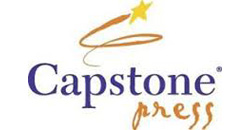
Capstone Press:
Animal Extinction EmergencyCountless animals are in danger of dying out. But why are species going extinct, and what happens when we lose them? In this graphic novel, Max Axiom and the Society of Super Scientists are on a mission to find out.
-

National Geographic:The four-decade quest for an HIV vaccine yields new hope
While the reality is far more nuanced than recent hype suggests, a breakthrough strategy is finally offering fresh tools for battling this devastating virus.
-

bioGraphic:
From Reviled to AdoredHow one community—and one woman in particular—have found a way to protect the rarest stork in the world by embracing it as one of their own.
-

The New York Times:
Combating an Epidemic of LonelinessHumans can survive three minutes without air, three days without water, three weeks without food and — according to survival lore — three months without companionship. Whether true or not, what’s clear is that people need people. And pandemics, many of us are learning, can be lonely times. More here on ways to seek support while social distancing.
-

National Geographic:
Your daily commute won't ever be the sameCoronavirus will upend—but perhaps make healthier—the ways we use trains, buses, and bike lanes in our post-pandemic future. Read more here.
-

The New York Times:
Worried About Your Kids’ Social Skills Post-Lockdown?Social interactions are an important part of development, and spending time with peers is typically part of that process. But try not to fret too much about what they’re missing right now.
-

Outside:
How to Manage Cabin FeverAs most of the world stays indoors for days on end, we're all feeling varying degrees of cabin fever. Here's how to make sure you come out of it OK.
-

Popular Mechanics:
The Shockingly Recent History of People Actually Washing Their HandsIt has become a ubiquitous mantra in the time of Covid-19. Wash your hands. But hand-washing wasn't always a no-brainer. Read more here.
-

CJR:
How the COVID Tracking Project fills the public health data gapI profiled the Covid Tracking project, which has roped in dozens of volunteers to provide accurate testing numbers during the Covid-19 pandemic. “It’s just classic accountability journalism.”
-

National Geographic:
What’s the safest gathering size to slow the coronavirus? There isn't one.As much of the world grinds to a halt to reduce the spread of COVID-19, small group sizes are recommended. Also important: the dynamics of crowds, individual vulnerabilities, and virus variations. Read more here.
-

Norwood House Press: Astro the Alien Books
Join Astro the Alien and his friends, Ben and Eva, as they learn about animals, emotions and more. Topics include: Sharing, Ocean Animals, Polar Animals, and Teamwork, with more in the works. Learn more here.
-
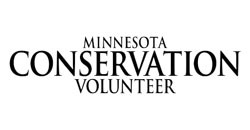
Minnesota Conservation Volunteer:
Hold the SaltMinnesota's lakes and streams are getting saltier, threatening aquatic life. We can't get the salt out, but we can use less on icy sidewalks and in water softeners. Read more here.
-

bioGraphic:
Standing GuardNumbers of this critically endangered bird have stabilized thanks to conservationists who keep watch, but what happens if the caretakers leave? The story of the hooded grebe is one of mystery, tragedy and hope.
-

New York Times:
Your Toddler Has A.D.H.D. Should You Medicate?A growing number of preschoolers are getting diagnosed with A.D.H.D. Based on concerns and lack of data, some researchers suggest other options, such as behavior therapies and parent training programs. Read my story here.
-

New York TImes:
How to Handle Your Baby’s Stay in the NICUHaving a baby in the NICU can be stressful, emotional and overwhelming. Every baby is different, and things can change quickly. A baby who is doing well one hour may take many steps backward the next. I wrote a guide to help parents navigate the experience for the New York Times' new parenting section.
-

Spectrum: Righting the gender imbalance in autism studies
Evidence that clinicians are missing girls with autism has been building for years -- omissions that carry over into the research literature, where studies typically include three to six males for every female. Some researchers are trying to break the cycle, seeking out girls, women and nonbinary people to better understand gender differences in autism.
-

Mosaic: Strep A kill half a million a year. Why don’t we have a vaccine?
It’s a public health catastrophe that’s crying out for a vaccine -- a solution that has been on a retreating horizon for decades. I traveled to Uganda to report on efforts to slow the assault of Strep A, while researchers work toward a viable vaccine for the world.
-

Washington Post: Dispelling deadly myths about the flu vaccine
Despite consistent messages about the dangers of the flu and the protective power (and safety) of the flu shot, many people still hold false beliefs. This story was on the most-read list when it came out.
-
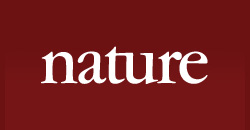
Nature: How the evidence stacks up for preventing Alzheimer’s disease
New research has led to a sea change in thinking about Alzheimer’s disease, suggesting that modifiable lifestyle choices might influence our risk of developing the condition. Read more here.
-

Washington Post:
A tumor growing on her baby’s heart forced this pregnant mom to make a terrifying choiceAlysha Kellner was 23 weeks pregnant when she learned last year that her baby had a rare, fast-growing tumor on her heart that might require surgery while still inside the womb. A remarkable series of events followed.
-

bioGraphic:
A Grand Experiment on The GrasslandsA decades-long debate over protection of the lesser prairie-chicken could usher the Endangered Species Act into a new and very different era. This story delves into a decades-long battle over a bird, a disappearing landscape, and a push for oil.
-

Nature:
When sickness interrupts scienceScientists with chronic illnesses say that perseverance is essential to success. Sticking with a research program also signals to superiors and colleagues, and to others with chronic illnesses, that a diagnosis need not stymie a research career.
-

Scientific American:
Why Autism Seems to Cluster in Some Immigrant GroupsFor any family, navigating an autism diagnosis is a long process full of paperwork, questions and decisions. When those conversations happen in a foreign language within an unfamiliar healthcare and educational system, the confusion can escalate. This story originally ran in Spectrum and was picked up by Scientific American.
-

bioGraphic:
Basking on the BrinkAn "unholy" river in India called the Chambal may be the last, best hope for one of the world's largest and most imperiled crocodilians. This story explores research that followed a mysterious die-off of a distinctive reptile.
-

Washington Post:
If you exercise a lot, you probably think your heart is in good shape. Maybe not.Exercise does a lot to strengthen the heart and lengthen lives. But heart problems are still common — and sometimes dramatic — in active people. This story delves into a nuanced message: Exercise is good, but nothing is 100 percent protective.
-

Nature:
Frontiers in Blood TestingTechnological advances are creating an explosion in possibilities for the blood-based diagnosis of brain injuries, infections and cancers. In this story, I delve into some of the newest potential for blood tests.
-

NPR:
Understanding The History Behind Communities' Vaccine FearsIn the midst of a measles outbreak in Minneapolis , I looked into why the region's Somali community remained hesitant to vaccinate. Understanding the history behind vaccine fears — and the culture that reinforces them — is an important step toward overcoming them, research suggests.
-

The Atlantic:
How Rats Could Lead to Autism Drugs That Actually WorkMice have long been the mainstay of autism research, but a small group of scientists say rats are the superior choice. Rats are bigger, smarter, friendlier — and a lot more fun. This story originally ran in Spectrum as: "Meet the newest contestant in the scientific rat race."
-

Star Tribune:
On climb up Grand Teton, marriage reaches new heights
When my husband suggested that we climb the Grand Teton to celebrate our 10th anniversary, I said I’d think about it. Then I locked myself in the bathroom and googled: “Will I die climbing the Grand?” I wrote about our anniversary trip for the Star Tribune.
-

History Channel:
The Making of a SEALThe U.S. Navy has collected tons of data on what SEALs share in common and which psychological factors are most likely to cause failure in the early stages. But they still can't predict who will persist through pain, fear and exhaustion to become one of the toughest warriors on the planet.
-

Nature:
Health and safety: Danger zoneSnake bites, ice falls, infectious diseases: fieldwork often involves significant threats to safety. Researchers recommend meticulous preparation. If calamity strikes, a sound plan could make the difference between tragedy and escape.
-

The Guardian:
"Wow, Prince Is Here"When tours began at Paisley Park's reincarnation as a museum, I went to the scene to talk to people about why they wanted to see Prince's home and studio, and what struck them about the experience.
-

Washington Post:
I broke my nose in Costa Rica. Here's What I Wish I had Known.
When I surfaced, blood was flying. It gushed as I paddled frantically back to the beach and was rushed to the local clinic. The receptionist took one look at me and said, “Surfando?” Heading abroad? My story offers tips for getting medical advice while traveling.
-

bioGraphic:
Owl WarsThe latest conservation conflicts pit one species against another. To save an iconic bird in the Pacific Northwest, the government is taking no chances—and no prisoners.
For this story, I explored the history and consequences of an unsettling experiment by the Fish and Wildlife Service to save the iconic spotted owl by killing barred owls.
-
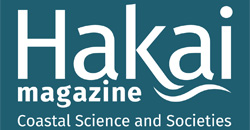
Hakai:
Breeding DoryOn a humid spring morning in 2014, Eric Cassiano checked on a 210-liter tank filled with flea-sized baby fish struggling to survive—the latest attempt to conquer what had become equal parts scientific puzzle, conservation quest, and race against Disney. This is the story of the race to breed iconic reef fish in captivity before Finding Dory created a spike in demand.
-

Ensia: What's In Those New Plastic Pipes
Environmental engineer Andrew Whelton has spent more than a decade studying how pipes that carry drinking water alter water quality and health. Still, he struggles to answer questions about a new generation of plastic piping material called PEX. With data still accumulating, consumers are left in the dark. Read more here.
-

Washington Post:
Minnesotans Mourn Prince"Befitting the spirit of Minnesota respectfulness, police calmly directed traffic and allowed fans to lounge and roam on a grassy knoll outside of Paisley Park after Prince's death. Surrounded by a hum of TV vans and a roving helicopter overhead, visitors were eager to share their memories."
I interviewed some of the people on the scene for this story.
-

Washington Post:
I’m a smartphone addict, but I decided to detoxSince the 1990s, dozens of studies have documented the addictive nature of the Internet. And access to the Internet has only intensified with the popularity of smartphones. How can we take back control of our smartphone relationships? I offer some ideas here.
-

Nature:
Fieldwork: Extreme ResearchIn October 2013, Marina Elliott saw an advertisement for a project in South Africa that called for cave explorers with archaeological experience who were also small enough to squeeze through a narrow passageway to excavate an underground chamber. She was startled by how perfectly qualified she was for the job.
-

NPR:
When A Family Comes Down With Norovirus, It Isn't PrettyThe misery began around 4:30 a.m. with the sound of my 7-year-old thumping into the hallway. He had already been up once, complaining of a stomachache. This time, I scrambled out of bed and shushed him so he wouldn't wake up his 2-year-old brother. He looked at me and moaned. Then he puked all over the floor. Read more at NPR's shots blog.
-

Discovery News:
How to Teach Gratitude to KidsAs American families sit down to enjoy Thanksgiving dinner this year, at least some parents with young children will brace for the fall-out: complaints about wearing nice clothes, refusals to eat the broccoli, and insistent requests for more pie. How can we teach our kids to be more grateful for what they have?
-

Ensia:
When Nature Meets TechnologyAs more apps and other online tools connect users with the outdoors, we walk a fine line between enhancing and degrading nature-based experiences. Does technology enhance our relationship with nature or pull us further away? I explored this question for Ensia.
-

Aeon:
Every Living ThingSingle animals sometimes get care that costs hundreds of thousands of dollars – money that could be spent instead on protecting habitats and other conservation efforts that save far more animals at a time. Could wildlife rehab be a massive waste of time and money? I explored this question for Aeon.
-

Nautilus:
Counting Animals Is A Sloppy Business“Everything hinges on how many, and how many is inherently error-prone,” says Douglas Smith, senior wildlife biologist at Wyoming’s Yellowstone National Park. “Wildlife doesn’t want to be counted.” Here's my story on the inherent errors in animal censuses and how we'll probably never know how many there are.
-

Hakai:
What Now, Walrus?The convergence of Inuit wisdom and scientific study is helping researchers begin to understand what a changing Arctic means for the walrus (and for those who depend on it). My story for Hakai explores the complicated ways that climate change is affecting walruses, polar bears, people - and their relationships with each other.
-

NPR:
What's Luck Got To Do With Health Care? A Heck Of A LotThe journey started with a harrowing drive over the hairpin turns of the Pan-American Highway. Then came a rough stretch of unpaved road to the shores of Lake Atitlán. Finally the health workers reached Antonio, a 6-month-old suffering from severe malnutrition in rural Guatemala. The visit transformed his future.
-

NPR online:
It Kills Germs: Can It Wipe out Ebola?A new hand-sanitizer lasts for up to six hours and kills many kinds of bacteria and viruses. USAID and the CDC are exploring its usefulness in the battle against Ebola. I wrote about it for NPR online.
-
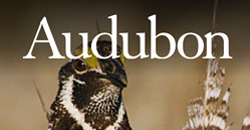
Audubon:
Real Estate for Purple MartinsBiologists and volunteers are using maps to bring a beloved species back to Wisconsin. I wrote a small story for Audubon magazine about efforts to locate all the Purple Martins in western Wisconsin.
-

Nature Outlook:
Dogged PursuitAustin was still a puppy when his owners called the University of North Carolina's Francis Owen Blood Research Laboratory in Chapel Hill. In just six months, they had spent $10,000 to deal with extreme bleeding from small scrapes. I considered the great contribution dogs have made to the study of hemophilia for Nature Outlook.
-

Nature Outlook:
The Toxic Side of RiceHalf the world's population eats rice every day, making the grain a major source of nutrition for billions of people. But there is often something nasty in those grains alongside the vitamins, minerals and carbohydrates. My story for Nature Outlook looks into efforts to grow rice with less arsenic.
-

Nature News & Comment:
Malaria Control: The great mosquito huntThe armed guards at Mali's Bamako Senou International Airport had never seen a German shepherd before. So when Dana stepped off a plane, eight soldiers surrounded her and her trainer Sapir Weiss, guns raised. My feature for Nature looks into an unorthodox search to find out where malaria vectors hide during a long dry season.
-

Discovery News:
How You Can Be Fit But Not HealthyA growing, still controversial body of research has begun to show that all the exercise in the world won't protect your heart if you don't also eat well and for some people, take drugs. Exercising too much, I found, may even raise the risk of developing clogged arteries. "People say, 'I run, so I can eat whatever I want...That's not true. That needs to go away."
-

Minnesota Monthly:
The Caveman Controversy
In her new book, Paleofantasy, Marlene Zuk dared to debunk a lifestyle that advocates eating, exercising, and even mating like our ancestors. Now the outspoken insect-sex researcher has adversaries, who say she’s the one whose thinking needs to evolve.
-

Discovery News:
Is War Inevitable?War is not inevitable , according to two scientists who analyzed acts of aggression in 21 hunter-gatherer societies -- the latest fodder for a long debate over whether warfare has an evolutionary history embedded in our brains, or whether it is a response to more recent developments in how societies are structured. This story was picked up by NBC News.
-

Ensia:
The Secret to Sustainable Development? GirlsIf every girl living in the developing world were given an education, a voice and a chance, according to a growing body of evidence, there would be less disease, less poverty, less pressure on the environment from overpopulation and fewer deaths at tragically young ages. Helping girls, in other words, helps the whole world.
-

thirty two:
The war on milkIn this 6,000-word story, also picked up by MinnPost, I delved into the raw-milk underground and explored the battle between advocates for food safety and advocates for food freedom. "It has been a tough couple of years for raw-milk drinkers in Minnesota."
-

Los Angeles Times:
Vegetarian KidsToddlers who refuse to eat furry animals; teenagers who suddenly hate everything their parents cook; children of vegetarian parents. Whether it's your choice or theirs, raising a vegetarian kid can be a challenge. My four-part story explores news that vegetarian diets are safe for people of all ages.
-

Discovery News:
GM Corn-Tumor Link Based on Poor ScienceOpponents of genetically modified crops have jumped on the results of a new study, which claims to have linked the consumption of GM maize with the development of tumors in rats -- despite widespread criticism of the research from independent scientists around the world. My take-down of a flawed study for Discovery News.
-

Discovery News:
Lost People Really Do Walk In CirclesNo matter how hard people tried to walk in a straight line, they often ended up going in circles without ever realizing that they were crossing their own paths -- unless they could see the sun.
This story was picked up by NBC News.
-

Science News:
The Big DryAustralia is locked in a drought of drastic proportions. And climate models are projecting more of the same—and worse—for many years to come. For Science News, I wrote about how prolonged drought threatens Australia's people, wildlife, and economy.
-

Capstone Press:
A Crash Course in Forces and Motion with Max Axiom, Super ScientistFollows the adventures of Max Axiom as he explains the science behind forces and motion. This graphic novel is written at a third/fourth grade reading level.
-

Science News for Students:
The Littlest Lemurs"Ziggy is not amused. The tiny creature has already been trapped in a box and hauled through the rainforest. Some of his hair has been clipped. Now, he crouches on the floor of a cage, while three pairs of human eyes stare at him. One of those pairs is mine."
During a trip to Madagascar, I reported this story about how studying mouse lemurs offers clues to our own origins.
-

Smithsonian:
Board Rooms"This project is the greatest thing that ever happened to me," says McIsaac, 32. "It's great to give something back to the culture and to carry on the traditions that once proliferated right here where we're standing." I wrote about the plankhouse for Smithsonian magazine.
-

Science News:
Nobel Celebrations: An Elegant Turn With Science's Elite"Journalism, in my experience, is not a high-glamour job, and I am not a high-glamour person. Nevertheless, I was delighted to find myself scouring the streets of Stockholm last Dec. 8, looking for the perfect gown to wear to the Nobel festivities." In this essay, I wrote about my fabulous visit to the Nobel Prize ceremonies.
-

National Geographic News:
Ospreys Flock to Cuba, With Conservationists Close By"At 12:30 p.m. on a clear October day in the mountains of eastern Cuba, Luis Orlando Melian Hernandez lifts his binoculars to the sky. "Look, look!" he points triumphantly, as two ospreys soar overhead." On an expedition to Cuba, I wrote about effortswrote about efforts by Cuban ornithologists to track migrating ospreys and recruit volunteers to protect them.
